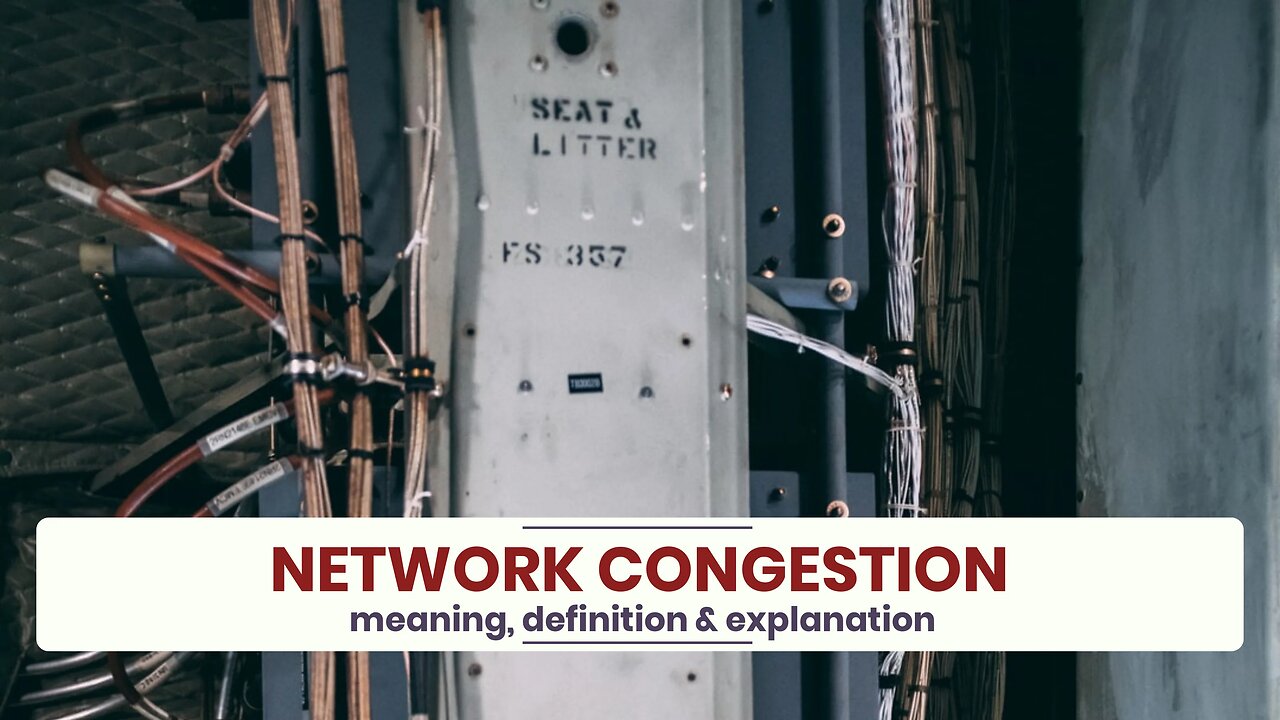Premium Only Content

What is NETWORK CONGESTION?
✪✪✪✪✪
http://www.theaudiopedia.com
✪✪✪✪✪
What does NETWORK CONGESTION mean? NETWORK CONGESTION meaning - NETWORK CONGESTION definition - NETWORK CONGESTION explanation. What is the meaning of NETWORK CONGESTION? What is the definition of NETWORK CONGESTION? What does NETWORK CONGESTION stand for? What is NETWORK CONGESTION meaning? What is NETWORK CONGESTION definition?
Network congestion in data networking and queueing theory is the reduced quality of service that occurs when a network node is carrying more data than it can handle. Typical effects include queueing delay, packet loss or the blocking of new connections. A consequence of congestion is that an incremental increase in offered load leads either only to a small increase or even a decrease in network throughput.
Network protocols that use aggressive retransmissions to compensate for packet loss due to congestion can increase congestion, even after the initial load has been reduced to a level that would not normally have induced network congestion. Such networks exhibit two stable states under the same level of load. The stable state with low throughput is known as congestive collapse.
Networks use congestion control and congestion avoidance techniques to try to avoid collapse. These include: exponential backoff in protocols such as 802.11 CSMA/CA and the original Ethernet, window reduction in TCP, and fair queueing in devices such as routers. Another method is to implement priority schemes, transmitting some packets with higher priority than others. A third avoidance method is the explicit allocation of network resources to specific flows. One example of this is the use of Contention-Free Transmission Opportunities (CFTXOPs) in the ITU-T G.hn standard, which provides high-speed (up to 1 Gbit/s) local area networking over varying wires (power lines, phone lines and coaxial cables).
Congestive collapse (or congestion collapse) is the condition in which congestion prevents or limits useful communication. Congestion collapse generally occurs at "choke points" in the network, where incoming traffic exceeds outgoing bandwidth. Connection points between a local area network and a wide area network are common choke points.
When a network is in this condition, it settles into a stable state where traffic demand is high but little useful throughput is available, packet delay and loss occur and quality of service is extremely poor.
Congestion collapse was identified as a possible problem by 1984, for example in RFC 896. It was first observed on the early Internet in October 1986, when the NSFnet phase-I backbone dropped three orders of magnitude from its capacity of 32 kbit/s to 40 bit/s, which continued until end nodes started implementing Van Jacobson's congestion control between 1987 and 1988.
When more packets were sent than could be handled by intermediate routers, the intermediate routers discarded many packets, expecting the end points of the network to retransmit the information. However, early TCP implementations had poor retransmission behavior. When this packet loss occurred, the endpoints sent extra packets that repeated the information lost, doubling the incoming rate.
-
 1:26
1:26
The Audiopedia
1 year agoWhat is MOTTO?
57 -
 UPCOMING
UPCOMING
Misfits Mania
3 days agoMISFITS MANIA: Fight Night
109K67 -
 13:14
13:14
Upper Echelon Gamers
20 hours ago $0.85 earnedThe "Slop YouTubers" Are Angry... (And the Reason is Hilarious)
3.84K6 -
 1:06:28
1:06:28
A Cigar Hustlers Podcast Every Day
1 day agoHustler Every Week Day Episode 433 "Oscars And Chill"
7.2K -
 4:26
4:26
GreenMan Studio
1 day agoGREENMANS STOCKING STUFFERS 5 – GREENMAN AI
4.45K5 -
 5:00
5:00
SethDrums
4 days ago $7.91 earnedStaind – It's Been Awhile if it was 1980s
62.8K13 -
 20:18
20:18
itsSeanDaniel
2 days agoCandace Owens CALLED OUT by Piers Morgan, So She FIRES BACK
18.1K14 -
 4:57:14
4:57:14
Akademiks
12 hours ago21 Savage Wants Young Thug, Wham & Gunna to SQUASH IT! Future Sneak Dissing? Jim Jones Pays 50 Cent?
391K13 -
 6:01:38
6:01:38
Right Side Broadcasting Network
2 days agoLIVE: President Trump to Deliver Remarks in Rocky Mount, NC - 12/19/25
148K62 -
 3:24:48
3:24:48
VapinGamers
11 hours ago $49.16 earnedDestiny 2 - Dungeons and Loot with Friends - !rumbot !music
113K1